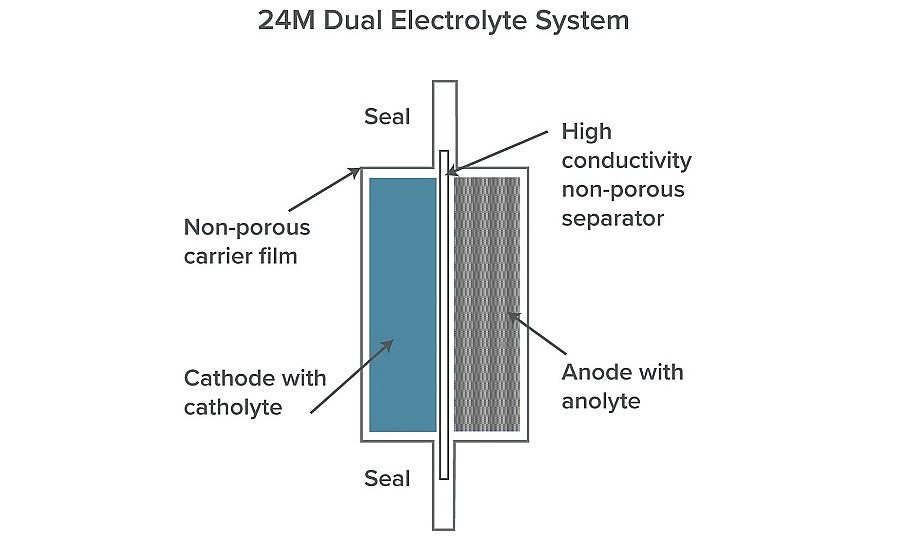
24M: Bigger batteries? Yes, thanks to our dual electrolyte invention
24M unveiled a dual electrolyte lithium-ion cell design. It is expected that the "catholyte" cathode and "anolyte" anode will achieve a specific energy of 0,35+ kWh / kg. This is at least forty percent more than the best elements in the world achieve today (~ 0,25 kWh / kg).
24M cells differ from classical cells by the presence of two electrolytes separated from each other by a wall that is conductive but not porous. Thanks to it, it will be possible to achieve a higher energy density (0,35 kWh / kg or more) and a longer battery life while reducing its production costs.

The new 24M cells will be showcased at the Florida International Battery Show and Workshop. The company even coined a marketing name for them: "24M SemiSolid", because the inner diaphragm is designed to solve the "previous problems" that arise in solid electrolyte cells.
> How has battery density changed over the years and have we really not made progress in this area? [WE WILL ANSWER]
The cells have been developed over the past eight years, “tens of thousands of units” have been manufactured and tested, and 24M promises they are ready for mass production. Thanks to the separate electrolyte chambers, other liquids such as ... water can be tested in this role. Until now, it has been an undesirable component due to the high reactivity of lithium (source).
If 24M cells really did their job, we would be dealing with a small revolution. The battery compartment in the floor of the Renault Zoe will not hold 41 kWh, as in this year's model, but 57 kWh of energy. This will allow you to travel over 370 kilometers on a single charge. Or power up the house for a week.
> Renault begins testing V2G: Zoe as an energy storage device for the home and the grid
In the photo: 24M lithium-ion package (v)
This may interest you:

